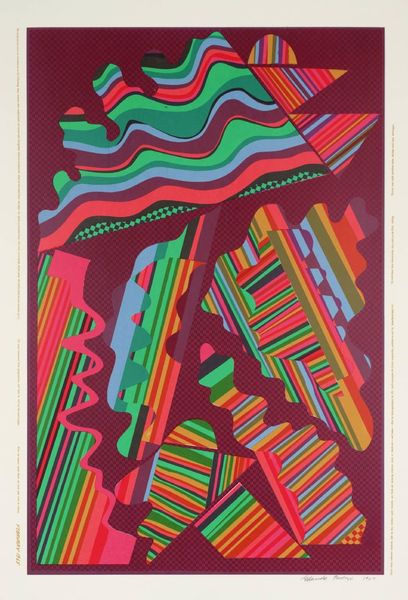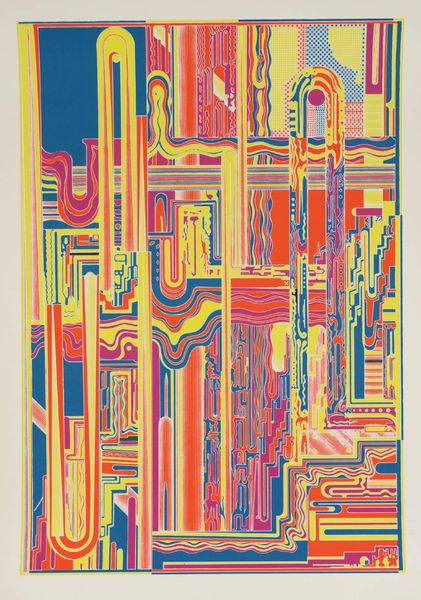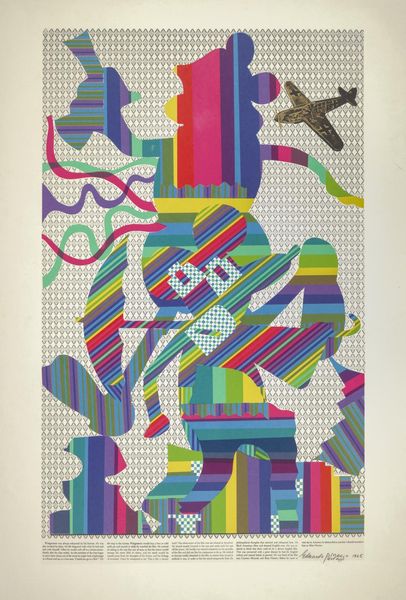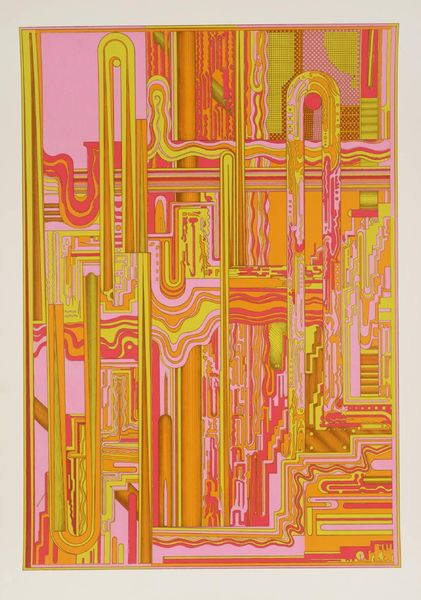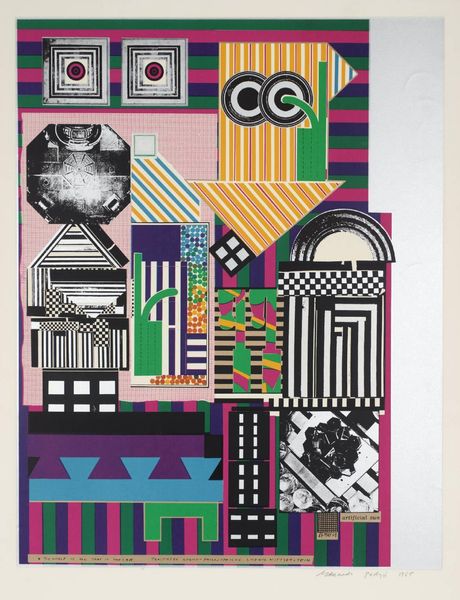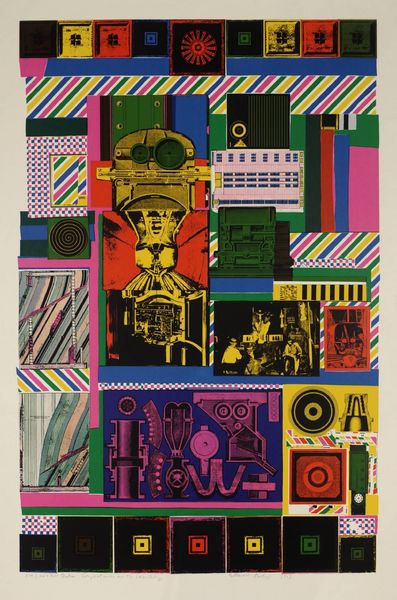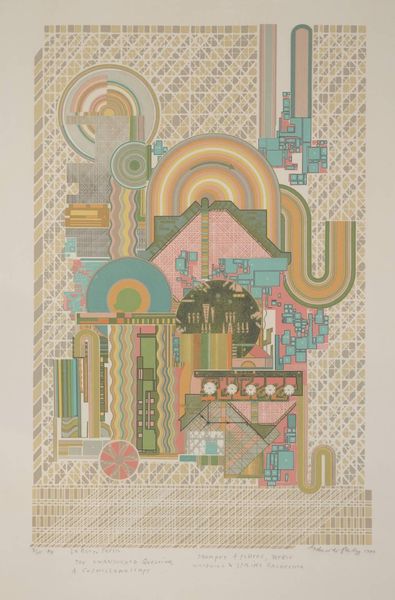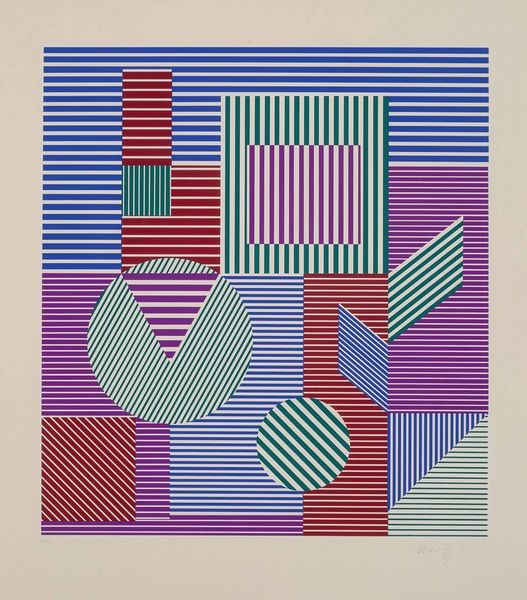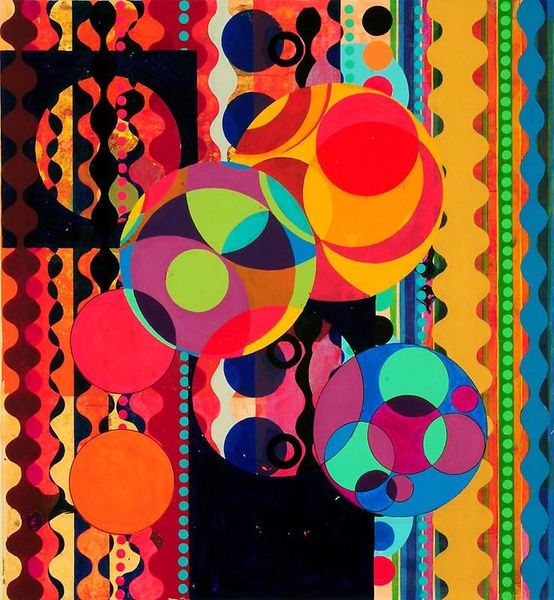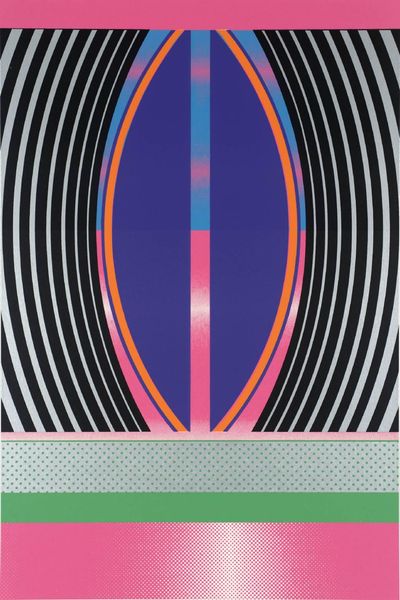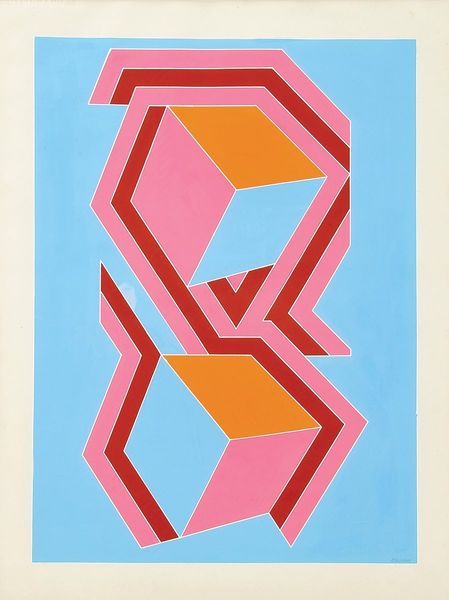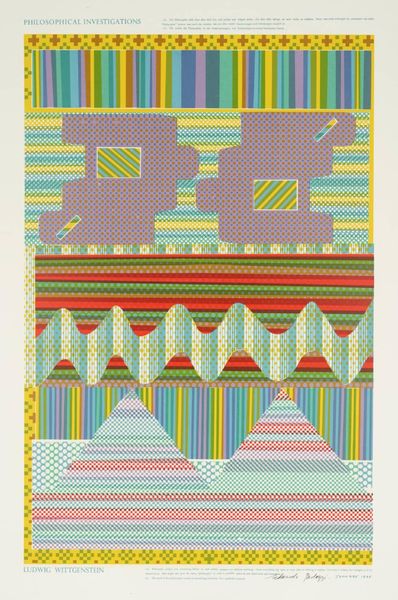
Dimensions: image: 830 x 511 mm
Copyright: © The Eduardo Paolozzi Foundation | CC-BY-NC-ND 4.0 DEED, Photo: Tate
Editor: So, this is Sir Eduardo Paolozzi’s "Poster," from May 1965. It's a screen print bursting with geometric shapes and vibrant colors. It feels almost chaotic at first glance. What do you make of this piece? Curator: Chaotic, yes, but perhaps a beautifully orchestrated chaos! Paolozzi, a master of Pop Art, is engaging with Wittgenstein's philosophies here. Do you see how the fractured forms might mirror the philosopher's complex ideas? It's a visual puzzle, isn't it? Editor: It is, like trying to assemble something from broken pieces. I didn't make the connection to philosophy at first. Curator: Exactly! Paolozzi's work makes us question how we perceive and piece together information, much like Wittgenstein did with language. It's wonderfully playful and profound. Editor: I guess I was too focused on the vibrant colors to notice the deeper meaning. This has really opened my eyes. Curator: Mine too, every time I look at it. Art is like that; it shifts as we shift.
Comments
Join the conversation
Join millions of artists and users on Artera today and experience the ultimate creative platform.
tate 6 months ago
⋮
Paolozzi learnt screenprinting in 1950 at the London College of Printing. But it was not until 1964 that he set about making a major suite of images in this medium. 'As Is When' was based on the life and writings of the Austrian philosopher Ludwig Wittgenstein. Paolozzi had been impressed by a biography of Wittgenstein he had been reading, and some of the prints incorporate passages from the text. Others use quotations from Wittgenstein's own writings. These written elements were combined with photographically transposed fragments of collage taken from Paolozzi's extensive collection of clippings and other printed material. Many of the prints developed as richly patterned abstractions but a number contain specific references to events in Wittgenstein's life. Gallery label, August 2004
